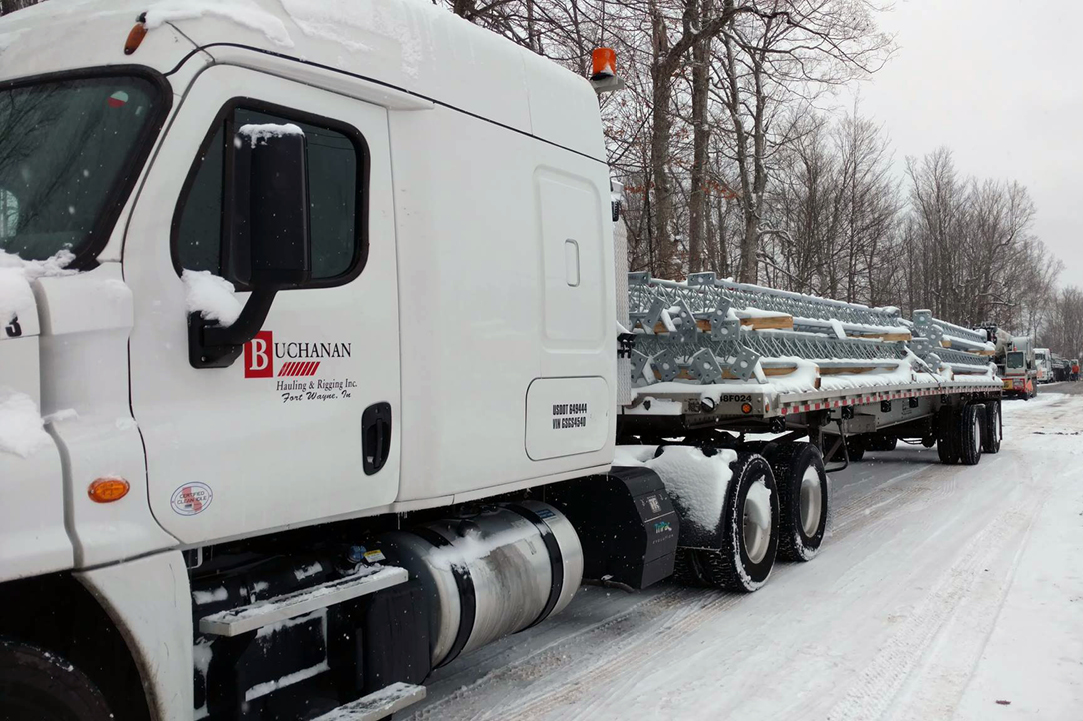
As we approach the next few months, let’s take a minute and look at how daylight savings time and inclement weather can impact our logistics rhythm, but more importantly, what can be done to prepare you and your operation for Old Man Winter?
Daylight Savings
Many will debate the new age relevance of Daylight Savings Time, the fact of the matter is, it’s still here for now. While much of the US will “gain” an extra hour, drivers will not- 10 hours off duty is still 10 hours off duty.
Depending on where you are in the US, you will see a 1-hour loss of daylight during the month of November. (10.5 hours to 9.5 hours). December through January, expect an average of 9.5 hours of daylight.
So what does this mean for trucking? Trucks have headlights, right?
Many shippers who have loading operations outside will adjust for shorter loading windows and be more stringent on loading hour flexibility. During the Summer months when trucks are starting to get loaded as early as 6 a.m., will now be waiting until after 8 a.m. to get loaded. By the same token, 7-8-9 p.m. unloading will likely end by 5 p.m. Drivers who once were able to load and deliver same day on shorter mile runs or multiple day moves, may see a loss in productivity/profitability.
Falling Temperatures, Inclement Weather
As temperatures begin to fall, trucks that squeaked through DOT inspections all summer will struggle with upkeep once Jack Frost starts hanging around truck stops at night. Buchanan Logistics performs daily reviews of our contracted carriers to ensure they are ABOVE the FMCSA’s intervention threshold for Basic Percentile Scores, which includes Vehicle Maintenance. By doing so, we are taking preventative measures to reduce the chances of potential breakdowns and out-of-service violations of trucks hauling your freight.
Drivers will see an increased amount of time required to start their day and perform a quality pre-trip inspection during the next few months, and transit time could increase by as much as 50% or more with ice and snowfall. According to a study by the National Cooperative Highway Research Program (NCHRP) Forty-five percent of all construction projects are affected, to some degree, by extreme weather, resulting in billions of dollars in additional costs. Anti-Gelling Fuel Additives and Snow Chains are just a few necessities drivers will need to keep with them over the next few months as well.
In addition, drivers are required to remove snow and ice from their trailers prior to travel. Each state has different language, previsions, and fines for snow/ice removal to prevent danger to other motor vehicles. As a Shipper, you should also inspect trailers to ensure flatbed/step-deck trailers are free from ice and snow build-up before loading. Once Ice and Snow begin to melt under a load, chains, and straps can become loose, which can result in a slew of dangers.
Last, but not least, permitted loads may be restricted from traveling in adverse driving conditions. While subjective and extremely gray, the FMCSA classifies adverse driving conditions as Heavy rain, snow, sleet or ice, heavy fog, high winds, dust storms, heavy traffic, or any other exceptional circumstances beyond the driver’s control, that make it difficult or impossible for them to complete their trip within the required HOS time limits. Make sure your operation is prepared for oversized/overweight loads that will require additional travel time in the next few months.

How you can prepare:
Consider sourcing additional capacity before it’s needed. Trust in a Logistics partner like Buchanan, who can pull from nearly 30,000 trucking partners in addition to our asset fleet to reduce delays caused by mechanical failure or Out-of-service issues.
Communicate changes in your shipping and receiving hours once Daylight Savings Time is in effect and ASK your trucking partners how this affects them and their operation. This will help to build a partnership and may prevent increased costs.
When planning the # of trucks needed in a week, have a few on standby for when Jack Frost and Old Man Winter start lingering around. Also, trucks can become directional during the winter and will often not want to venture further from the house. Don’t be afraid to introduce seasonal capacity outside of your current provider.
Most importantly, call your trusted Buchanan Logistics Representative and ask how we can help you stay on top of things this Winter and into the New Year. With Operations in Massachusetts, North Carolina, Pennsylvania, Indiana, Michigan, Kansas City, Arkansas, Texas, and Arizona, we have you covered East to West and everywhere in between. Stay safe and warm this holiday season.




